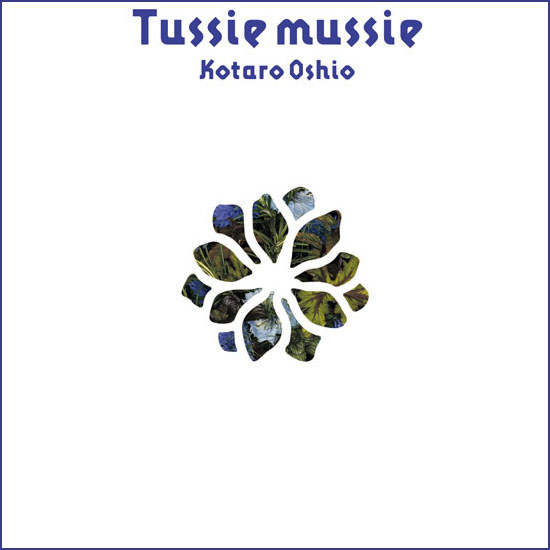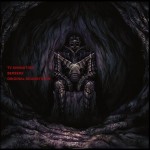We hopefully brought Kotaro Oshio’s amazing guitar skills to your attention last month with our review of You & Me. In his review, Tim mentioned Oshio’s then-upcoming album, Tussue mussie, which he described as Oshio’s first cover album, and that’s exactly what it is. Tussie mussie features some downright lovely guitar arrangements of pop standards from both Japan and the United States going all the way back to the 1960s.
So, which tracks are featured? How about “Lovin’ You” and “Time After Time?” Do those get you excited? Maybe not, but trust me when I say these arrangements are great. As for the remaining 8 tracks on the album, I’ll admit I’m not very familiar with them, but if anything, I enjoyed them even more for it.
Find out why that makes sense in our review of Tussie mussie after the jump.
First off, we already know that Oshio’s ability with the guitar is stellar. While each song features solo guitar, the arrangements are surprisngly full and vibrant. Oshio also utilizes tapping quite often, giving these pieces a strong sense of rhythm. I don’t think there’s a single track here that I don’t like.
So let’s start with the track list:
01 Lovin’ You
02 Close to You
03 そして僕は途方に暮れる
04 元気を出して
05 First Love
06 Can’t Take My Eyes Off Of You ~君の瞳に恋してる~
07 Someday
08 Time After Time
09 涙のキッス
10 Love
Oshio opens with some descending guitar arpeggios, working in harmonics to create a gleeful ambiance. The seductive melody that each and every one of us knows then kicks in. This track is one of the more sparse arrangements, focusing mainly on the whimsical melody but it’s quite soothing, and as an opening track, it lets you know right from the start that Oshio isn’t out to blow anyone’s mind this time around. It’s all about mood with this one.
“Close to You” comes next. This one makes use of the tapping I mentioned earlier, adding a funky swagger to his deliberate strumming. I don’t really know the song, but my wife sure seems to like it. On that note, I do think this album would make a neat gift for a girlfriend or a wife for some easy listening around the house. Getting to the next track, “そして僕は途方に暮れる” is actually one of my favorites despite it not being at all familiar to me. It has this repetitive melody line goes back and forth between ascending and descending, giving it a playful feel. I particularly enjoy the dreamy bridge section with its heavy use of reverb.
“元気を出して” has a groovy swing to it that immediately reminded me of the first Monk opening theme (which is an amazing song, by the way). “First Love,” on the other hand, lays it on thick with a very slow-paced and emotional melody line that sounds thankful more than beautiful. “Can’t Take My Eyes Off Of You” has been done about a hundred different ways, and this jumpy and energetic arrangement is fantastic, especially when the chorus kicks in.
On to “Time After Time.” All I really have to say is, “Why?” I’m not the biggest fan of the 80s, and songs like these are to blame. Oshio’s take is pretty straightforward, and I’ll admit to almost liking the song. The best thing about Oshio’s version is the lack of Cyndi Lauper and her whiney, disgustingly 80s male backup singer.
“涙のキッス” and “Love” quickly get things back on track before the album comes to a close. “涙のキッス” is more subdued version of the intensely upbeat original, which fits in much better with the easy listening approach of the rest of the album, while Oshio’s version of John Lennon’s contemplative “Love” takes the piece to an entirely new level. I do wish he had ended the album on a more upbeat note, as this one is a little depressing, but oh well.
I really do love the packaging for this album. The booklet features a number of photographs of this blue bouquet of flowers, which even appears in a digitized from on the disc itself, looking sleek in its metallic blue ink against a plain white backing. There’s also a cardboard slipcase with a flower cutout that fits over the jewel case in such a way that the bouquet shows through, allows some Earthy blues and greens to show through (see the image above). It’s hard to describe, but it’s really neat looking.
I’d say Oshio’s first cover album is a success. Not only did he turn some pretty mundane standards into something relaxing and interesting, but he also introduced me to some new music in the process. While there are only ten tracks on the album, I found myself enjoying the vast majority of them. Again, with so few tracks, I can’t imagine Oshio was able to visit all of his favorites, so hopefully we’ll see more albums like Tussue mussie in the future. Be sure to pick it up at CD Japan or Play Asia if you’re interested.
Would you like to see Oshio release more cover albums in the future? Perhaps a game music arrange album? Have any thoughts regarding Oshio’s questionable “Time After Time” selection?
Tags: 80s, Covers, Guitar, Kotaro Oshio, Music Reviews, Pop, Reviews









































And tabs?
Kotaro Oshio’s hello, I am happy to write in this space, you are excellent guitar playing, I really like being able to play that way.
Please tell me how I can get the tabs for Can not take my eyes off you in your version, you hear the song wonderful. where can I buy it? or where I buy one? podrias ayudarme? I’m from Mexico City, and here I think is a bit difficult to get the tablturas. = (I do not speak English, so I help my translator
: D
Where may I speak?
or where could I pay to get the tablature that both desire?
I hope and an answer.
I has a site, because I am a beginner and would like to be a good guitarist = D
thank you very much.
god bless and protect you wherever you are.
my email is [email protected]
no more to say.
be happy =)
Dear All,
I would really appreciate if some of you could help me in finding the tablature or the sheets of “Can’t take my eyes off you” (kotaro version). I think it’s reallly wonderful version but I haven’t been able to find/ buy it on the web.
many thanks in advance
GP
I have lots of Kotaro Oshio Tabs and most of them are masterpieces… Feel free to contact me.
Regards,
Corum
Hi Corum,
Do advise me on how I can get them as well?
Thanks.